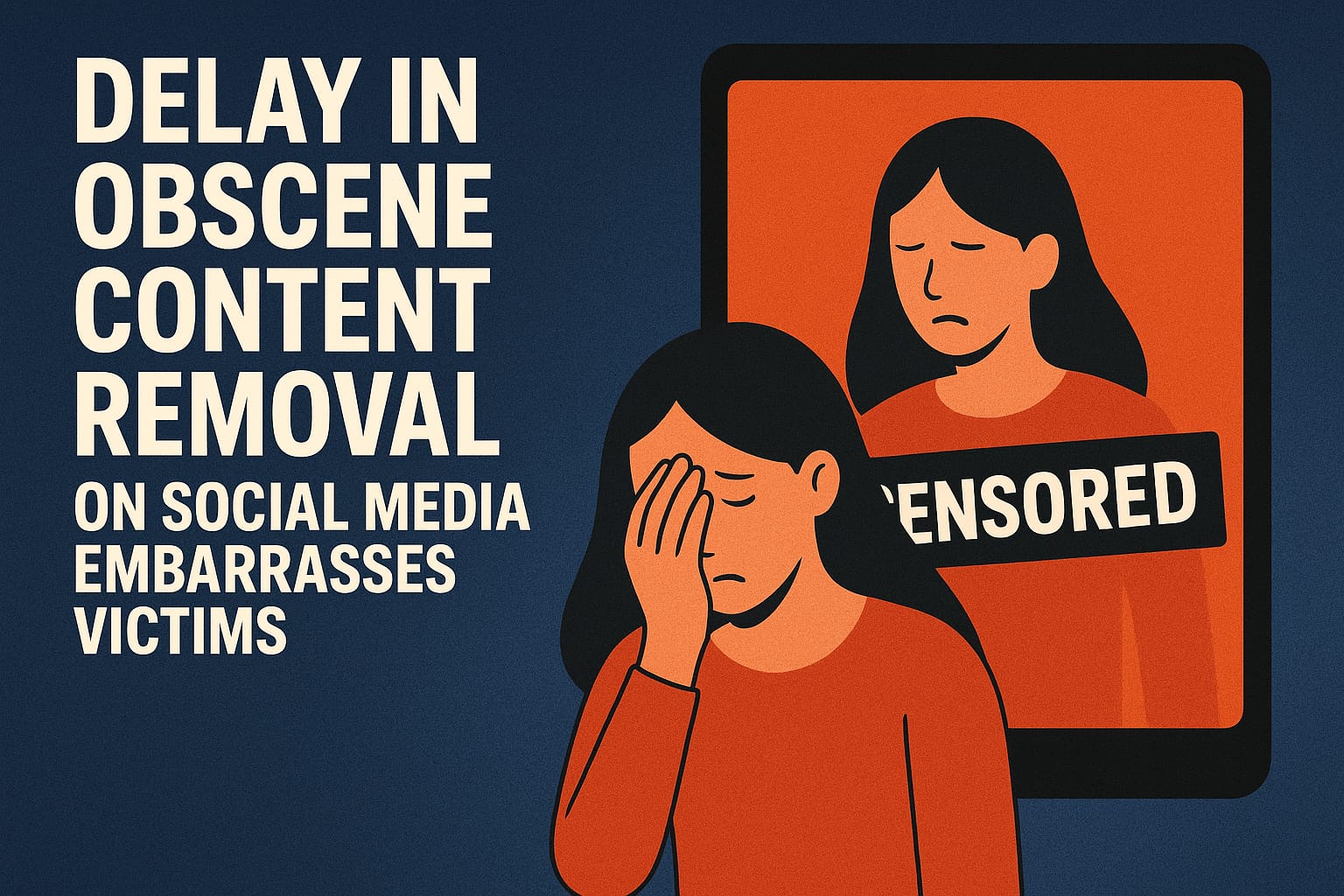Why in the news?
Calcutta High Court Justice Tirthankar Ghosh has highlighted its serious concerns over how the delay in obscene content removal on social media causes so much embarrassment to victims, urging that faster action should be taken and accountability from service providers be taken seriously.
What are the views of Justice Tirthankar?
Justice Tirthankar Ghosh of the Calcutta High Court on the date of August 24, 2025 expressed his serious concern over how the delay in removing the obscene content from social media and online platforms of the victims often causes the continuity to face embarrassment and trauma due to the lack of timely and appropriate action.
While speaking at the launch of eastern India’s first postgraduate MA/MSc course in Criminology and Criminal Justice by the esteemed National University of Juridical Sciences (NUJS), he highlights the fact that although investigations into financial cybercrimes can follow the money path to a certain degree but they do face much difficulty in removing or restricting the sexually explicit content from the online sites. As a consequence of which, the victims of such experiences get trapped in the vicious cycle of embarrassment and pin-pointing. “Victims are facing embarrassment and consequences of these not being removed or blocked by the concerned service providers. Investigators often fail to reach the originators or even the platforms hosting such content.” Justice Ghosh observed.
What are the problems faced by the victims?
Justice Tirthankar Ghosh showed his serious concerns how people who are quite unfamiliar with digital banking face getting trapped in the hands of the mercy of the online frauds and face significant hardships when targeted by such frauds. Furthermore, he pinpoints a major critical challenge which has been faced by the courts over the years: the inconsistencies between post-mortem reports and forensic expert opinions often complicate the adjudication process, which ultimately leads to the delay in justice.
He continuously emphasized how forensic science plays a crucial role at both the investigation and trial stages, and this newly launched criminology course will rightly be able to place strong emphasis on this aforementioned area.
What are the views of Justice Ananya Banerjee?
Justice Ananya Banerjee who was also present at the event hosted by esteemed National University of Juridical Sciences (NUJS) expressed her concern over the fact that India provisions for victim compensation exist but India lacks a separate statute on victimology which has become the need of the hour. “It is enlightening that the concept of victimology has been incorporated in the new courses, addressing the trauma, agony, and pain of the victim, along with restorative procedures to help them rebuild their lives,” Justice Banerjee said. Her main stress was over how cybercrime and forensic technology must work hand in hand in order to ensure justice and support the victim.
What are the views of West Bengal’s Director General of Cybercrime?
With the view to add a law enforcement perspective to the discussion , West Bengal’s Director General (Cyber Crime) Sanjay Singh described cybercrime with the metaphor of a “tsunami” sweeping across India. While addressing the people, he highlighted some alarming figures like how in the state of West Bengal alone, approximately 400 cyber fraud complaints were filed in the month of August 2025 itself which includes the cases with losses between Rs 3–4 crore daily. If we take a national perspective, annual cybercrime losses officially stand at a record of Rs 30,000 crore, but unofficial estimates suggest that the actual figure could be much higher that we have been given in the official data. A typical cyber fraud involves the money being routed through up to 1,000 accounts across 70–80 cities in 20 states, in order to deliberately confuse the investigators. He urged citizens to report cybercrimes on an immediate basis through the National Cybercrime Reporting Portal (1093) while stressing that the first response is to block the money flow before it disappears in laundering chains which are very difficult to detect at the latter stage.
Conclusion
Justice Ghosh hopes that the new program will bridge the gap between legal education, criminology, and forensic science, creating a space for the professionals for betterment who will be equipped to tackle evolving crimes, especially in the digital arena.
Author’s Information
Mansi, a third year law student currently studying at VIPS-TC under GGSIPU with a growing interest for legal research. She’s passionate about criminal justice, family law and women & child rights.

